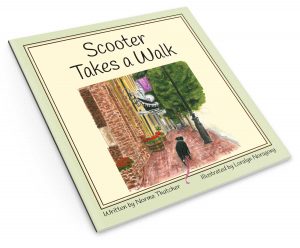
Someone asked me recently to identify what separates me from others who teach public speaking. “What makes you different—why should I choose you?”
This isn’t something I had to think long or hard about. Clearly, it’s my focus. My students learn that every lesson I teach has some focus on the AUDIENCE instead of the PRESENTER. In fact, when I participated in an exercise to provide an entertaining and creative job description for myself, here’s what I came up with: I make the world a safer place for audiences by teaching adult students to become caring public speakers who respect and entertain the people who show up to listen to them.
The class on developing a presentation or speech starts out with ways to make it easy for the audience to follow our message. Because we’ve all heard speakers ramble on for an hour while we keep guessing what the main point is. Like playing the whack-a-mole game, just when we think we’ve hit on the right idea, up pops another possibility.
When we get to the training on body language, we learn ways to move and stand to emphasize our message’s meaning for the folks sitting out there so nicely. If we’re making an emphatic verbal pronouncement while standing with our hands resting on our bellies (as very pregnant women often stand), our bodies are telling the world that it’s not important. If there is a contest between our words and our body language, the body wins.
There’s actually one entire class devoted to making our audience feel more involved in our presentation. Did you know an audience will talk to us without speaking? They’ll nod their head in agreement, raise their eyebrows in recognition (Hey, that happened to me once too!), laugh (fingers crossed this happens at points where we hoped they would laugh), turn to look expectantly at the person sitting next to them, as in, “She’s great, right?” We need to acknowledge this non-verbal talking from our audience, because otherwise they feel neglected. “Oh, I see from your smiles some of you have experienced this before.”
And we can actively involve the audience in our presentation by asking questions, seeking a show of hands over a point, choosing a volunteer for a demonstration or skit, dividing the audience into teams with instruction while we walk around offering feedback, playing games or doing puzzles that relate to and drive home our message.
It’s amazing how shifting our focus to our audience and away from ourselves helps with anxiety. When our first consideration is what gifts we can leave with our audience (a way to solve a problem, a paradigm shift, laughter, ideas to improve, motivation to start or stop something), we can give up the concept that if we aren’t 100% perfect, we have failed. Because it’s just not so.
To my readers: Think about the last speaker you heard (live or online). What was it about them that made you feel a connection or disconnection?



